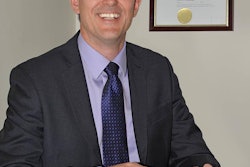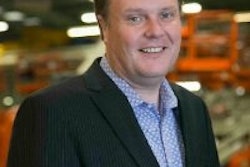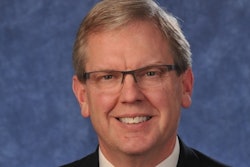
Rental recently sat down with Matt Fearon, president of Genie/Terex Aerial Work Platforms, to find out how he sees the aerial market shaping up so far in 2018, and what we can expect for the near-term future.
Rental: How do you see the current state of the aerial market?
Matt Fearon, president, Genie/Terex Aerial Work Platforms: The market’s stronger. This time last year, we were starting to see all the signs, and now they’re clearer. If you look at rental fundamentals - time utilization and rental rates have come up, the used equipment market is healthy - those are the core things we’re looking at. Our backlog at the end of December was the highest year-end backlog in Genie’s history, and now 2018 just keeps getting stronger. What’s interesting is that backlog is all over the world too, not just any one market. Certainly North America drives a lot of it, but Europe is very strong and Asia is strong.
Rental: How does the North American market differ from others?
Fearon: In 2017, North America was showing growth rather than replacement. In 2018, we’re starting to see both growth and replacement. In Europe, the recovery is broadening. The European market has been good the past couple years, and we’re starting to see Spain and Eastern Europe come back. In Asia, it’s still all about adoption. Globally, the market is healthy. These are the times you wait for.
Rental: Does that make you feel anxious at all? Like the other shoe is going to drop?
Fearon: We look for signs it’s getting too hot, too fast over too short a period of time. Are people starting to take on crazy amounts of debt? Things like that. We’re not seeing any of that right now. We’re at the beginning of a nice part of the cycle. We always have an ear to the ground on whether fundamentals are going to stay healthy.
Rental: Do you believe rental companies are savvier today in the way they weather market dynamics?
Fearon: Yes, that’s one reason we’re seeing so much backlog. They can see it, they know they need to get their orders in really early, so they’re managing their fleets very well. They know when they’re going to need equipment, they know when they’ll need to replace equipment. They’re giving us the heads up and that’s perfect.
Rental: What are the underlying factors currently driving market strength?
Fearon: We have a nice combination of things happening. Nonresidential construction is always going to be the driver for this business, but if you look at industrial, it’s healthy and it’s not going away. Even housing, which gets into telehandlers… all the core industries are well balanced and fueled with the replacement cycle.
Rental: How much are the Trump administration’s policies affecting the market?
Fearon: Certainly, the tax changes are not hurting anything. US companies having a lower tax rate means they’re going to have more money to invest. Rental companies, especially those in acquisition mode, are going to look at whether they can expense their machines rather than depreciate them over a long period of time, and we’re going to see a lot of them saying hey, this is a unique opportunity. I don’t think it’s going to radically change what people are doing, but it’s certainly not hurting the overall sentiment.
The recent actions by the Trump administration on tariffs and concerns over trade wars, has had a dampening effect on the growing optimism that the tax changes had created. There was an immediate reaction by U.S. steel mills who significantly raised domestic steel prices. This lead to increased costs which have unfortunately been passed on as a steel surcharge.
You can see the effects that talk of infrastructure spending is having. There hasn’t been a huge infusion of money yet, but it seems like every airport I go to is putting up a terminal. There’s no clarity on where the money is coming from, but there are a lot of people saying it looks like it’s going to happen.
Rental: What do you hear from your customers?
Fearon: Customers are upbeat. They’re getting busier and healthier. And they’re seeing the growth broaden out, so I think people are feeling good, that’s for sure.
Rental: What do see as the major technological trends?
Fearon: For us, it’s the XC product line and the way we’re using the ANSI standards change as an opportunity to innovate. We’re trying to provide machines that do more work. Our philosophy is based on a pragmatic approach to the application of technologies so rental companies can make more money. We’re always looking for opportunities to come out with technology that’s not just really cool, or interesting to the engineers, but that can translate to value for our customers.
Telematics is a topic with almost endless possibilities that will re-shape the industry. We’re putting an enormous amount of effort into making sure our machines have the capacity built in. You’ll see the telematics are going to be a big part of the answer, but where do you get the service mechanics? There aren’t enough of them. We want to make the machines smarter and provide tools to the rental company so they don’t have to touch them as much, they can anticipate when they should have some parts changed out. We feel like we have the capability, and in partnering with our customers, we can change a lot about the way the machines are managed throughout their life.
Rental: What do you see in your crystal ball?
Fearon: Right now, we’re anticipating the replacement cycle will come into our favor in 2018-19. That’s happening, it’s real. So we’ve got that underlying demand that’s going to be driven just by replacement alone. We need to watch out and always be careful, but when this market runs you’ve got to be able to meet demand. We’ve built our manufacturing system and supply chains to be able to handle the upticks in the market.
We’re optimistic about the next couple of years. We’re not without caution, and from a manufacturer’s standpoint, the issues around tariff and trade are going to have a big impact on steel. The labor shortage, across the board, is also a concern. There aren’t enough truckers to move the equipment around, the supply chain is getting pinched. As everything comes up, there are going to be hurdles, but I view these as the good problems. There’s hard work to do to keep up with the growth, but it’s nothing we’re not used to.





















